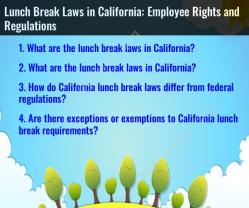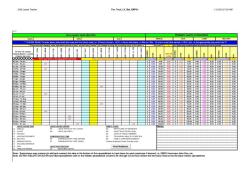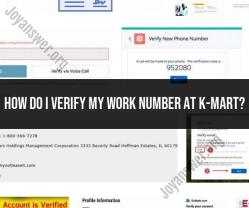How do I become a welfare eligibility worker?
Becoming a welfare eligibility worker typically involves a combination of education, training, and experience in the field of social services. The specific requirements may vary by location and employer, but here are general steps you can take to become a welfare eligibility worker:
Educational Background:
- Obtain a relevant educational background. While specific requirements may vary, many welfare eligibility worker positions require at least a high school diploma or equivalent. Some positions may prefer or require a bachelor's degree in social work, human services, psychology, sociology, or a related field.
Earn a Degree:
- Consider pursuing a degree in social work, human services, or a related field to enhance your qualifications. A bachelor's degree can provide a solid foundation in social services and help you understand the principles and practices of eligibility determination for welfare programs.
Gain Relevant Experience:
- Acquire relevant experience through internships, volunteer work, or entry-level positions in social services. This experience can help you develop the skills necessary for working with diverse populations and understanding the eligibility criteria for welfare programs.
Develop Interpersonal and Communication Skills:
- Welfare eligibility workers need strong interpersonal and communication skills to interact effectively with clients. Develop your ability to communicate clearly, empathize with others, and build rapport with individuals from diverse backgrounds.
Understand Welfare Programs:
- Familiarize yourself with the welfare programs and social services available in your jurisdiction. This includes understanding the eligibility criteria, application processes, and regulations governing welfare programs.
Stay Informed about Relevant Laws and Regulations:
- Keep abreast of changes in laws and regulations related to social services and welfare programs. Understanding the legal framework is crucial for accurately assessing eligibility and providing informed assistance to clients.
Complete Required Training:
- Many welfare eligibility workers undergo training programs provided by their employers or relevant government agencies. This training typically covers program policies, procedures, and the specific eligibility criteria for the programs you will be working with.
Obtain Certification:
- While certification may not be mandatory in all locations, obtaining certification in social work or a related field can enhance your credentials. Certifications such as those offered by the National Association of Social Workers (NASW) may be beneficial.
Apply for Positions:
- Search for job openings for welfare eligibility workers within government agencies, social service organizations, or community service programs. Tailor your resume to highlight your relevant education, experience, and skills.
Prepare for Interviews:
- Be prepared to discuss your understanding of welfare programs, your experience working with diverse populations, and your ability to assess eligibility. Showcase your interpersonal skills, communication abilities, and knowledge of relevant laws and regulations during interviews.
Pass Background Checks:
- Welfare eligibility workers often undergo background checks to ensure their suitability for working in roles that involve handling sensitive information and interacting with vulnerable populations.
Remember that specific requirements may vary by jurisdiction and employer, so it's important to research the qualifications expected in your area. Additionally, networking within the social services field and seeking guidance from professionals already working in welfare services can provide valuable insights and support as you pursue a career as a welfare eligibility worker.
What steps or qualifications are necessary to pursue a career as a welfare eligibility worker?
The steps and qualifications to become a welfare eligibility worker can vary depending on the specific program and agency you're applying to. However, here's a general overview:
Minimum Requirements:
- High school diploma or GED: This is the basic requirement for most entry-level positions.
- Strong computer skills: Proficiency in word processing, spreadsheets, and database software is essential for managing case files and program data.
- Excellent communication and interpersonal skills: You'll interact with clients from diverse backgrounds and need to effectively explain policies, answer questions, and build rapport.
- Attention to detail and organizational skills: Processing applications and documenting information requires accuracy and meticulousness.
Additional Qualifications:
- Associate's degree in human services, social work, or a related field: While not always required, it can be advantageous, especially for competitive positions or higher-paying roles.
- Experience in social services or customer service: Previous experience interacting with and assisting individuals in similar situations can be valuable.
- Knowledge of government assistance programs: Familiarity with the specific programs and eligibility criteria relevant to your location is beneficial.
- Bilingualism or multilingualism: In areas with diverse populations, speaking additional languages can be an asset.
Steps to Become a Welfare Eligibility Worker:
- Meet the minimum requirements: Ensure you have the necessary education, computer skills, and communication abilities.
- Research available positions: Check government websites, job boards, and local social service agencies for open positions.
- Review specific job descriptions: Each position will outline its specific requirements and desired qualifications. Tailor your resume and cover letter accordingly.
- Complete any required training: Some agencies might require specific training modules or certifications for eligibility workers.
- Prepare for interviews: Practice common interview questions, research the agency, and demonstrate your knowledge of relevant programs and regulations.
- Pass background checks and drug screenings: Most government agencies require these for employment.
Additional Tips:
- Network within the field: Attend industry events, volunteer with social service organizations, and connect with professionals in the field to gain insights and potential opportunities.
- Consider professional development: Once employed, stay informed about changes in policies and regulations and pursue ongoing training to enhance your skills and knowledge.
- Demonstrate empathy and compassion: Working with individuals in need requires a genuine desire to help and a commitment to providing quality service.
Remember, the path to becoming a welfare eligibility worker requires dedication, but it can be a rewarding career with the opportunity to make a positive impact on individuals and families in need. Good luck with your journey!













